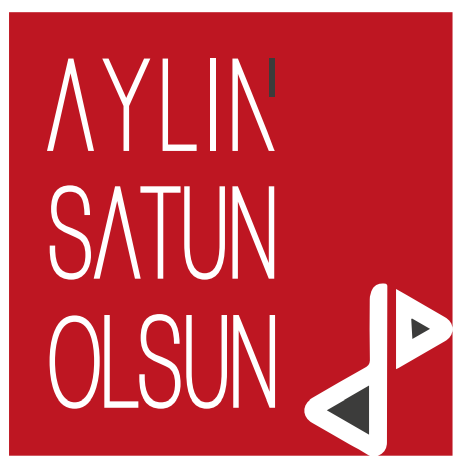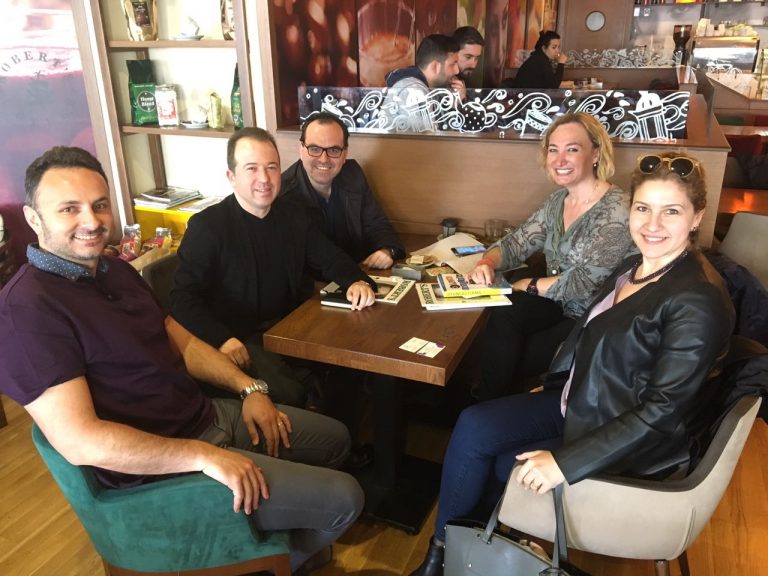The child, the young, the adult or the elderly… It doesn’t matter. We are looking for motivating factors to move, learn, change. Leaving the cigarette, losing 5 pounds, learning a foreign language can be among the new year targets every year, but we are not able to act and maintain this desire to achieve the goals.
The same goes for companies. It is necessary to adapt human resources constantly to change and to acquire new skills. Every year, millions of pounds are spent on corporate training but it is not done. New approaches are now needed to transform education learning into learning and learning into actual behavioural changes.
That’s where the gamification comes into play. The “game-like” approach allows us to get a “happy experience” in the first place. Last week, we talked with Ercan Altug Yilmaz about his book “Gamification” and of course, the concept of “Gamification”. It was not just two of us. Sales Coach Koray Inan, Elephants Do not Forget CTO Danu Celik, Humanist Writer Agency owner Menekse Polatcan Serbest, it was a group of free crowd. When we were a group that was eager to talk and share, we had the opportunity to evaluate the subject from many perspectives.
Ercan Altug Yilmaz was released his book in 2015. A book that you can refer as a source book in Turkish, get inspired and benefited from application suggestions. It examines all approaches to gamify, discussions with industry experts, and over 20 methods. In this regard, many resources and links to guide those who want to get information are shared.
Ercan Altug Yilmaz started his career as a software specialist. Then he transffered to Turkcell. He has worked as a specialist in Educational Technologies at Turkcell and Digital channel manager at Turkcell Academy. His Turkcell experience was not only about inside the company, but also opening out, especially when he was a digital channel manager at the Academy; getting to know the most advanced applications and approaches about the subject. Now he is a consultant to companies as a specialist in gamification.
Well, I did not just about the book, I asked a lot of questions followingly. He tried to answer as much as the time allows. I want to share a part of the chat.
ASO: How can you describe gamification to us?
Ercan Altug Yilmaz: We can not distinguish some concepts clearly in Turkish. For example, the words Game and Play correspond to the concept of playing games in Turkish but it is not the same. We can understand play as toys like dough and game as plays with a specific target. I think it is the simplest distinction: Play corresponds free acts whereas game defines an act shapes around a canon.
Gamification is the game tactics that are adapted to real life. The gaming industry has been studying human behavior for many years and has determined the criteria that people will hold fast and enjoy. In gamification, we use these tactics to solve problems and push people on. 75% of this process is psychology, and 25% is new technology.
ASO: How gamification can be used? Could you give me a few examples?
Ercan Altug Yilmaz: For example, there is the problem of sustainable attendance of education in a bank. So they come in late, they go out in half. We developed an application and started to receive full and timely attendance scores for the trainings and we linked it with social awards; participation fee for the conference budget, meeting with the CEO and eating a dinner. Again the parking lot in another bank was a serious problem and we placed gamification tactics in the car park as a prize and an opportunity to park the car. Taking into account the external and internal motivational factors of the employees, the systems we build are increasing participation and motivation. Again, in the study about rewarding of the sales team, we have defined senior management side rights as a reward.
You know, Pokemon 60 did the game that Fitgo could not. In the open air, the people have been directed to do sports with increased reality. Duolingo, which aims to provide continuity in language learning, is also an example of modern and digital gamification. Gamification can be used in organizations in any area such as training, recruitment, cultural exchange, performance and talent management. The important thing to do is to determine the basic problem or needs of the institution and use the tactics of gamification in the system accordingly.
ASO: Is gameplay an expensive vehicle? What does a role counselor do?
Ercan Altug Yilmaz: No, it is not expensive. For example, in companies, the stairs painted like rainbow to guide the use of stairs instead of elevator, or messages that indicate the calories you will spend on every step you take, is a gamification tool. It reduces elevator traffic while directing you to use ladders to move for your personal health.
The company, which takes advises on this, reports us the basic problem and its goals. We then determine user profiles and motivation factors in our institutional analysis. In accordance with these factors, efforts are being made to ensure mobilization and continuity with the award mechanisms.
At the end of working together, there comes an Excel-style design report. Experts within the institution enters, for example, www.oyunlastirma.com, by clicking on the PACMAN image on the right can see how is the gamification on the site. As you navigate the site, you can score points, earn badges, compete with other climbers and challenge them including the owner. In the “Captain Up” web site, they can integrate the gamification service for free to their own sites up to a certain number of users.
ASO: What do you think about the future of gamification?
Ercan Altug Yilmaz: I think that gamification will be called “Behavioral Engineering” in future. Everything you can measure will be an element of play. Personal mentors will make more contributions. In the environment where objects talk to each other, they can compete for more objects, but at the same time they can be engaged in collective plays in different companies.
Our chat has gone further. We also talked about the relationship of gamification with other disciplines (story telling, coaching, technology, innovation etc.). We’ve taken a lot of inspirations from each other. I plan to deal with the synergies and influences created by gamification in different disciplines and the practices of human resources in the second part of this article.
On the first page of Ercan’s book, while talking about the history of communication, he shared a small anecdote before the invention of the radio, telling how they learned the match scores. For example, from the crowd waiting outside after boxing matches; once the doors opened, the outgoing spectators enter the arms of the insiders, asking the score of the game. The conversations spread ear to ear among the crowd. After the invention of the radio, these gatherings and its tradition decreased.

The impact of technology on our lives is great. With the 4. Industrial Age, more interactions between objects, increased reality, avatars, etc. become widespread. It affects not only our daily lives, but our behavior and relationships, but there is something that does not change. It is difficult to imagine the changes in institutions without considering the emotions, motivation factors and personality of people.
Gamification creates the necessary momentum by merging creativity, interaction, participation, entertainment and goals. The “Gamification” book can be a good first step for those who wants to start making some differences and changes in their institutions.

